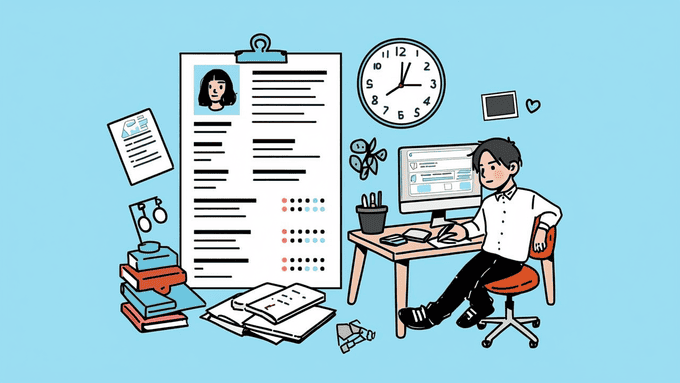Summary and Expanded Rewrite of ATS Formatting Mistakes

Applicant Tracking System (ATS) Overview
An Applicant Tracking System (ATS) is specialized software used by employers and recruiters to manage job applications, resumes, and candidate information. It analyzes and categorizes resumes based on specific criteria such as relevant keywords, job titles, and required skills, assigning a score that indicates how well the candidate's qualifications align with the job requirements.
Common ATS Formatting Mistakes
1. Information in Headers or Footers
Avoid placing important information such as names or contact details in headers or footers, as most ATS systems cannot read these areas. Keep all essential information within the main body of the document with one-inch margins on all sides for easy scanning.
2. Images or Graphics
Refrain from using images or graphics, as they cannot be scanned by ATS. Focus on a visually appealing yet ATS-friendly resume by adhering to layout rules such as proper margins, professional fonts, and concise bullet points.
3. Font Selection
Choose simple and professional fonts like Ubuntu, Roboto, or Overpass for readability and avoid unconventional fonts that may confuse the ATS. Stick to one font throughout the resume and use a font size between 10 and 12 points for body text.
4. Complicated Job Titles
Use the exact job titles mentioned in the job description to ensure ATS recognition. Unconventional titles may not be understood by the system, potentially disqualifying your application.
5. Acronyms and Abbreviations
Spell out terms or job titles the first time they are used, followed by the acronym in parentheses, to avoid confusion with the ATS. This practice ensures that industry-specific abbreviations are recognized.
6. Date Format
Use either the numeric format MM/YYYY (e.g., "05/2022") with leading zeros for single-digit months or spell out the month followed by the year (e.g., "November 2022") for consistency and ATS-friendly date formatting.
7. Missing Sections
Include all essential sections in your resume such as summary/objectives, contact information, work experience, education, and skills. Clear section headings help the ATS categorize information effectively.
8. Relevant Keywords
Identify and include keywords from the job description in your resume to increase the chances of passing the ATS screening. Incorporate them naturally without keyword stuffing.
9. Proofreading
Ensure your resume is free from typos and spelling errors, as these can confuse the ATS and lower your resume score. Use spell-checking tools and have others review your resume for fresh insights.
10. File Type Selection
Choose the correct file type for submission, with PDF being the safest option due to its formatting consistency across devices. However, if the employer requests a different file type, adhere to their specifications.
11. ATS-Friendly Resume Template
Utilize an ATS-friendly template that features a clean layout, standard sections, and reader-friendly formatting without complex design elements that may hinder ATS reading capabilities.
How ATS Analyzes Resumes
The ATS processes resumes by breaking them into sections, searching for specific keywords and phrases, and assigning a "resume score" based on the alignment with job requirements. A higher score increases the likelihood of your application being seen by a hiring manager.
ATS-Friendly Resume Example
An ATS-friendly resume should be clean, simple, and use plain text without graphics or images. It should have a professional font, standard heading names for sections, and include both full phrases and acronyms where relevant.
By avoiding these formatting mistakes and using an ATS-ready template, you increase your chances of landing an interview for your dream job.